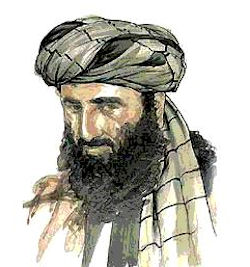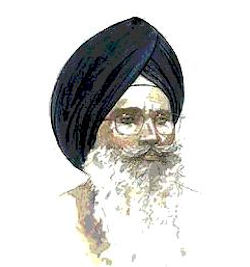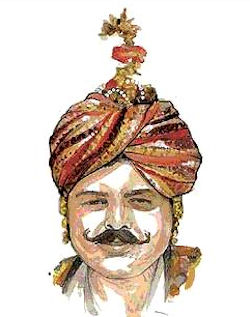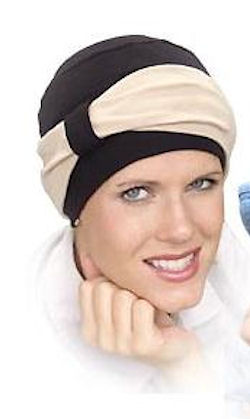Turbans
- one of the worlds most renown head dress

The first mention of turbans dates back to the end of the fourteenth Century, at the end of the Moorish occupation in Spain. The men followed the European fashion in beard, moustache and coiffure. The masculine headdress consisted, as it does today, wound round the head or over a crown or scull cap, the tall bonnet or taj. There is also a draped head cloth with neck cloth.

The turban, of obscure Oriental origin, is noted as a particular style of head attire worn by the men of the Mohammedan faith and is, essentially, a scarf of fine linen, cotton or silk folded round the head. Dulband was its Persian name, meaning a sash.
The English name derives from Turband, tolibant or tulipant, all variations of the flower tulip, suggested by the design of the folds.
An important detail in wrapping it is to leave the forehead bare so that when prostrated at prayer the wearer’s head touches the ground. It is considered a crime in Mohammedan countries for the unbeliever to wear this type of head dress.

The turban varies in shape, size, folds and colour according to degree of rank, race, profession and locale. The single piece of cloth ranges from twenty to thirty inches wide and six to nine yards long, to a piece of six to eight inches wide and ten to fifteen yards long.
Mohannedans have described as many as sixty-six different types. A controversial theological question revolves, especially in hot climates, around how soon after prayer the scarf may be removed. The skullcap is usually worn at work. Both men and women of the Mohammedan faith wear the tarboosh, Arabic for the brimless felt skullcap, a cap of Greek origin. The Egyptian wraps a scarf around his tarboosh and certain Indian races drape it round the Kullah, the Persian name for the pointed skullcap.
Sir Sayyid Ahmad, the Indian born Mohammedan educator and reformer, introduced the cap into India in the nineteenth century.
In Afghanistan, the scarf is swathed round a conical cap and the Hindu winds his scarf round his shaved head.
Some Indian races are turbaned with a made up version of this head dress style
In the same category as the tarboosh, is the Fez and the Chechia, varying but slightly in shape. Chechia is the name for the Berber Tashishit or skullcap which has a tassel.
The Turkish fez, usually red and tufted with a blue or black tassel, got its name from Fez, chief city of Morocco. It was supposed the dull crimson hue produced by the juice of a berry which grew in the vicinity could not be procured elsewhere, but in recent times the red cap was successfully made in France and Turkey.
When the Turks conquered Constantinople in 1453, they adopted, with modification, the Byzantine costume including the Greek cap. But the headdress of the followers of Mohammed, was turbaned to be draped in folds round the cap, thus signifying right of conquest.
A picture with caption of the sixteenth century tells us that the Turk, whose turban is always very clean, wore a large umbrella- shaped hat of felt over his head dress when going out in the rain.
The reformer, Sultan Mahmud, of the early nineteenth century decreed the turban no longer obligatory, but the crimson skullcap was to be retained. After World War 1, in the 1923 Turkey under Mustafa Kemal, decided to become a modern nation and proclaimed herself a republic. The Mohammedan code of laws was abolished and in 1925, the Western form of civilization was adopted. The national dress of men and women was outlawed, taking with it the centuries old skulcap. Persia followed suit in 1928 by adopting Western dress for men and in 1936 for women.
The Taj, Persian and Arabic for crown, traces its origan to the ancient tiara of the Mesopotamian Valley. The tall, brimless cone-shaped cap can be seen today in all Moslem countries, where it remains the headdress of distinction

This modern day hat, while many males of the above nationalities still wear this style of head dress, we westerners have simulated it as a fashionable ladies hat. During the 1960s, through to the 1980s, this type of hat was particularly popular. Currently, it would be considered in the category of another hat style, so it bobs up from time to time.
This type of hat is commonly used by cancer patients effected by chemotherapy hair loss, as the style covers the entire head and is made from any type of fabric. It can be a soft fabric covered hat or one that is more structured and the fabric is permanently draped over a blocked canvas base. Other versions can be long lengths of fabric wound around the head to form the turban in the same manner as those described above.
